The summer can be a hard time to stay on top of the weeds. As the temperatures rise and start to degrade the health of our common turf grasses, summer weeds can get a foothold.
Summer weeds can also grow in your beds – especially if you have been properly irrigating or we have a good amount of rain. Many weeds are optimally suited for hot, harsh climates.
Before we go further into identifying and controlling your weeds, let’s define our terms.
What is a weed?
Simply put, a weed is any plant that is where you don’t want it. This could be in your front foundation bed or in the middle of your yard. I have even seen weeds growing in gutters (true story). I guess a bird pooped a seed up there???
Some plants are more obviously weeds – thorny or poisonous plants. Other plants are weeds because they don’t fit the “desired aesthetic” (think a dandelion in the middle of your perfect lawn).
There are some weeds that are more common in central Texas summers. So here is your list and a primer on how to best deal with them…
1. Crabgrass (Digitaria spp.)
Crabgrass is an annual weed that grows in warm, sunny areas of your lawn. It has a spreading growth habit and can quickly take over large areas of your lawn. The leaves are light green and have a distinctive shape that looks like crab legs (thus the name). It is a very resilient weed and produces something like 150,000 seed in its life making it hard to eradicate.
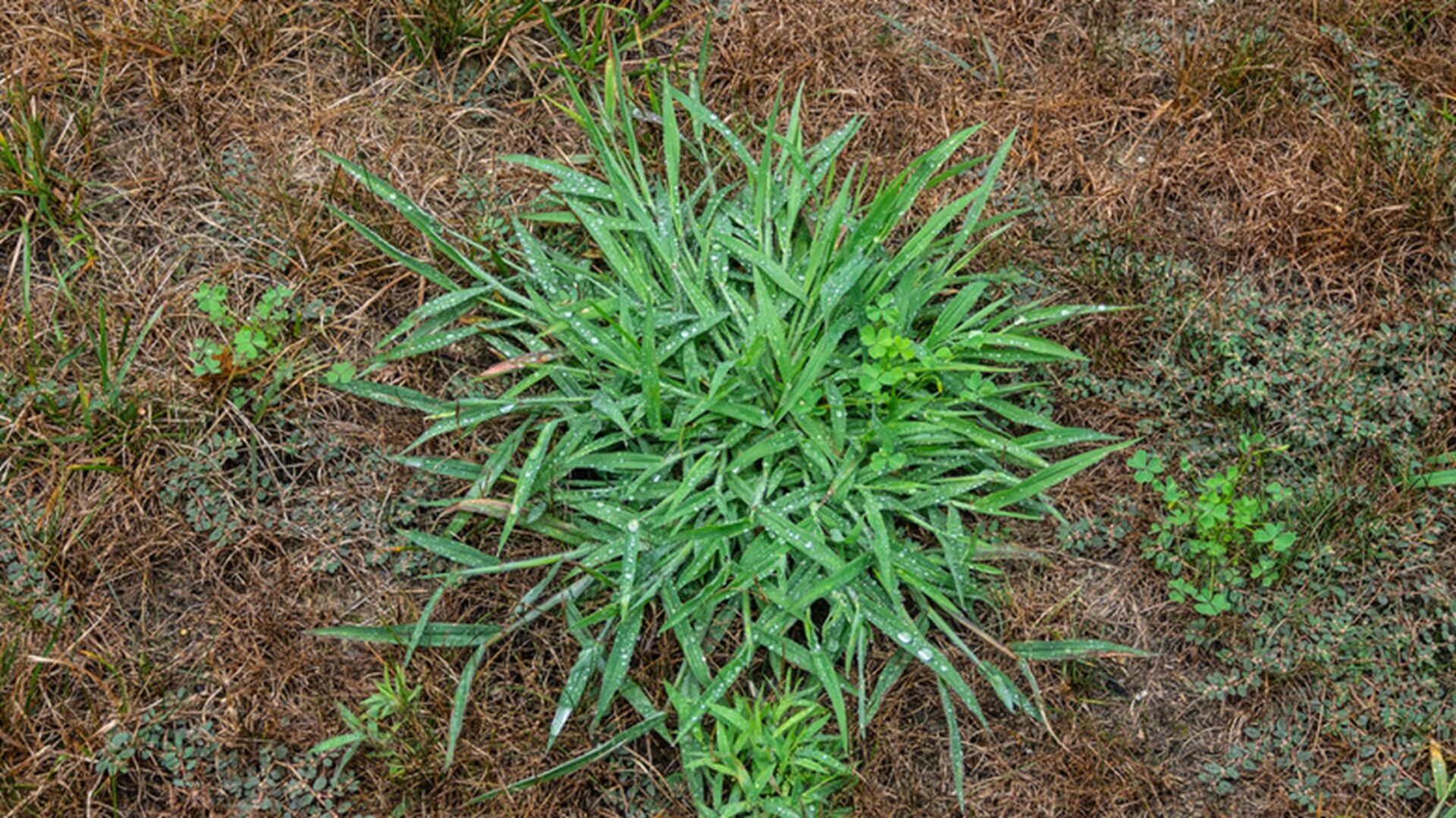
To control crabgrass in your lawn, you should apply a pre-emergent herbicide that prevents the seeds from germinating in late February through mid-April. You can also pull the plants by hand or use a post-emergent herbicide that targets the plant after it has started growing. Just be careful to use the proper chemicals so you do not damage the lawn.
To control crabgrass in your landscaping beds, we recommend pulling them by hand. It can be difficult to get the entire tap root so you will likely need to use a tool (like a shovel or a pick) – otherwise you will end up with the plant regrowing quickly.
2. Spotted Spurge (Euphorbia maculata)
Spurge is a low growing summer annual. It looks like a large weed because it covers a large area, but it only has one tap root, so it is super easy and satisfying to pull by hand. The leaves are oval shaped and small. This is one of the easer weeds to identify.
Treatment: Apply pre-emergent herbicides in early spring. For existing plants, use post-emergent broadleaf herbicides in late spring or early summer when weeds are young and actively growing.
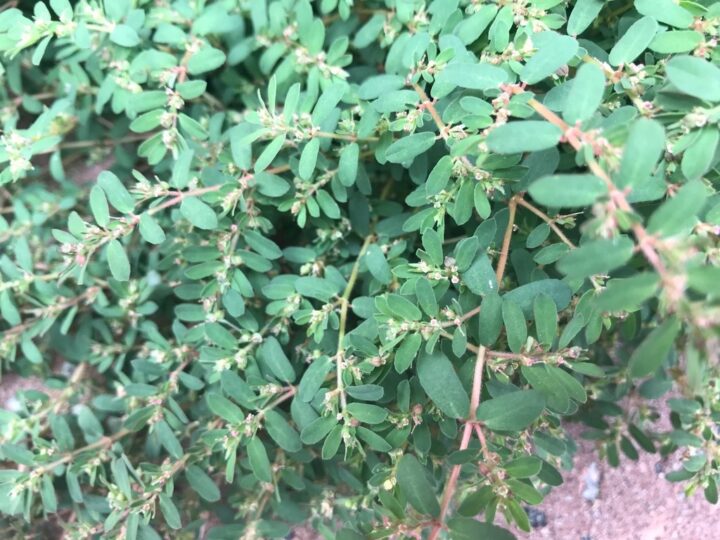
To control Spurge, we recommend hand pulling. It is an easy weed to pull and typically goes faster than expected. We recommend this for your beds and even your yard if you want to do it yourself. If you have a spurge infestation (a lot of them), then apply a broad leaf herbicide while the plant is actively growing (March-April) and October-November).
3. Sandbur or Grassbur (Cenchrus spp.)
Sandburs are annual grass weeds known for their spiny seed heads AKA: Stickers or Stickerburrs. These things are the worst! They hurt and somehow find their way into every flip flop and onto every kids’ socks. Ouch!
They typically grow in dry, sandy, poor soils that are not maintained. They are a summer weed that starts to germinate in Late April and will continue to germinate through the late summer.
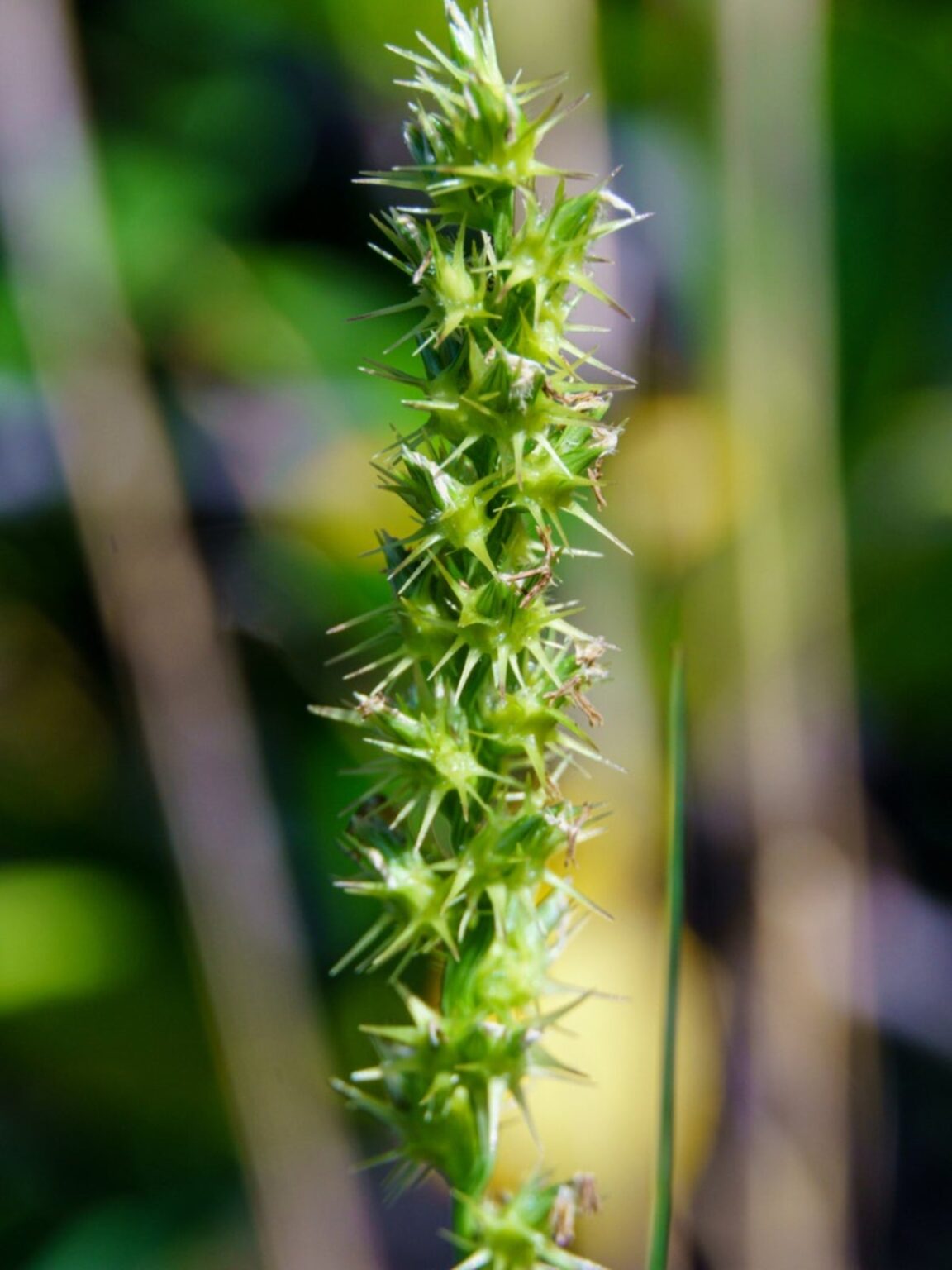
To control sandburs, the first priority is proper maintenance of the area. If your lawn has proper mowing, fertilization, and irrigation then you should be able to produce a lawn that is thick enough to choke out these weeds. Of course, if you still have them, then you can use herbicides to treat them. Pre-emergents should be used in mid to late spring (Mid march is a good time start). Post emergent work best on young plants – as it matures it is much more difficult to control with post emergent.
4. Goosegrass (Eleusine indica)
Goosegrass is easily mistaken with crabgrass but the easiest way to distinguish between the two is the whiteish center coloring. This is how I remember: I have seen a white goose. I don’t think I have ever seen a white crab. As mentioned above, the crabgrass often has some purple or pink tones near the center. It does very well in heavily compacted areas so you will likely see it on the side of roads or paths. It doesn’t produce as many seeds as its lookalike (crabgrass) but can still produce up to 50,000 seeds.
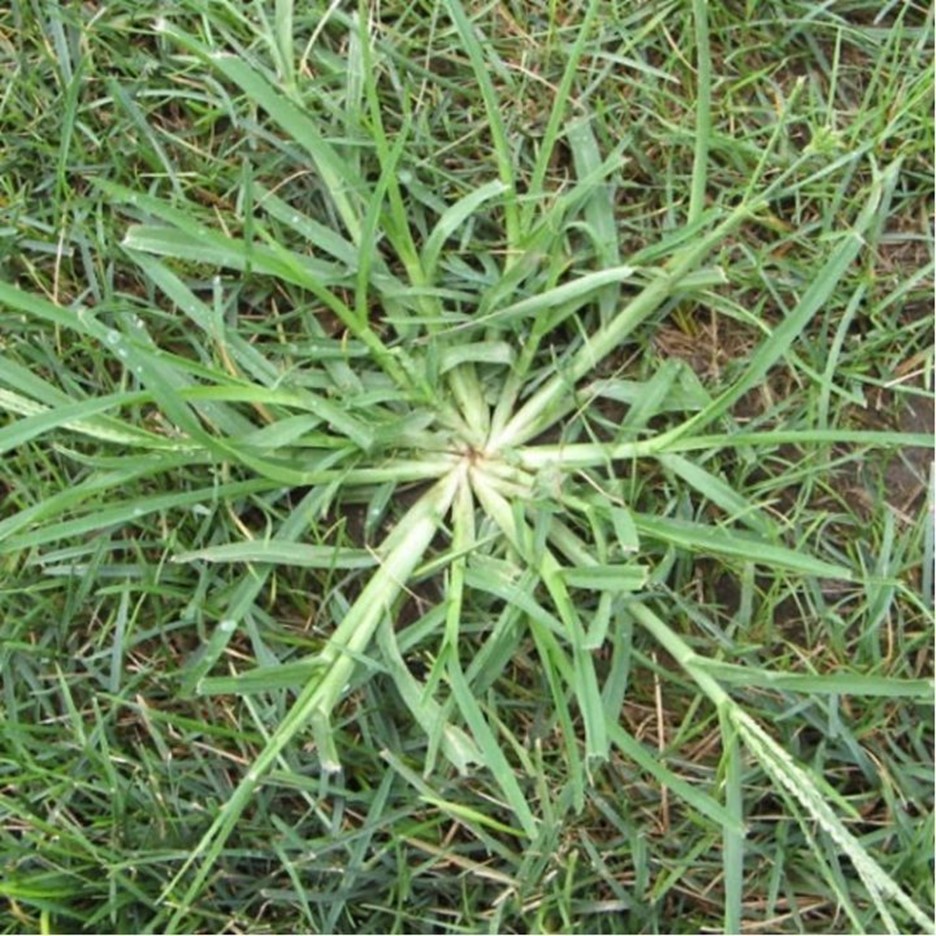
To control goosegrass, compaction management is essential. It thrives in compact soil so you should consider aerating the area to allow for other grasses to succeed. Try to remove these by hand (probably using a screwdriver) before they produce seeds. Otherwise, you will want to use a consistent program that combines preemergents and spot treatments.
5. Horseherb (Calyptocarpus vialis)
Horseherb (aka straggler daisy) is a shade tolerant ground cover that often takes over areas without enough light for other turf grasses to thrive. Some people love this plant. Some people love to hate it. It has become somewhat of crowd favorite for native plant advocates and you can even buy it at certain nurseries. It can even attract butterflies…but beware…it can take over a yard quickly.
To control horseherb, you have to either thoroughly handpull the plant or control it with a weed program. It has deep and hearty roots so it is a challenge to beat. It is also difficult to replace because it does so well in shaded areas where most other plants can’t survive.
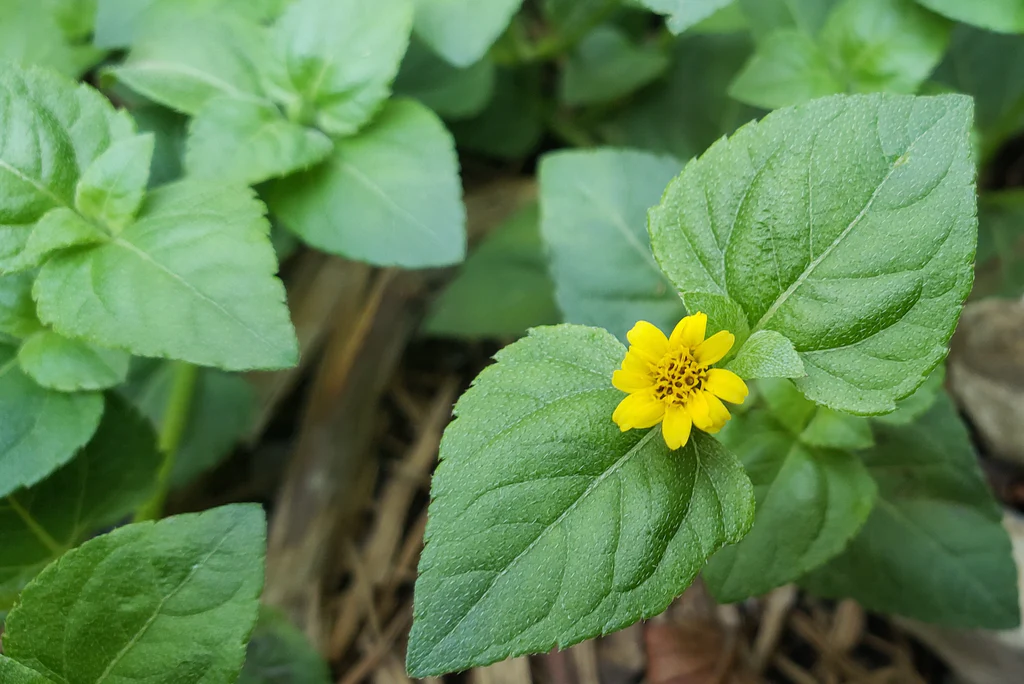
To control nutsedge, you can use a herbicide that targets the plant without harming your grass. It’s best to apply herbicide in the summer when the plant is actively growing.
In conclusion, dealing with summer weeds in your lawn can be a challenge, but with the right tools and knowledge, you can keep your lawn looking healthy and beautiful all year round. Remember to always read and follow the instructions on any herbicide you use, and wear protective clothing and gloves when applying chemicals to your lawn.

